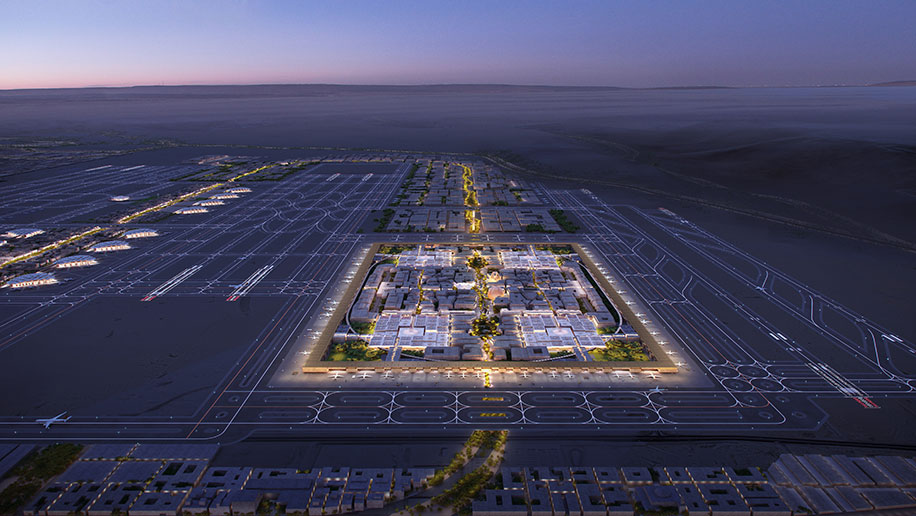Dubai, UAE - The Middle East Aviation Market, valued at a staggering US$60 billion in 2023, is on a trajectory of substantial growth until 2030, fueled by a 26% surge in air connectivity in 2022 compared to 2019.
By 2040, Middle East airports are poised to accommodate an astounding 1.1 billion passengers, more than doubling the 2019 figure of 405 million passengers. The required investment for this expansion is estimated to be around US$151 billion. The Middle East, boasting over 110 airports, stands out as one of the fastest-growing aviation markets globally.
In mid-May 2024, Dubai will host the world's largest annual event dedicated to the global airports industry. The 23rd edition of the three-day B2B event, The Airport Show, held at the Dubai World Trade Centre, is expected to draw over 150 exhibitors from 20 countries and welcome 7,500 visitors from over 30 countries. Co-located events include the ATC Forum, Airport Security Middle East, and the 11th edition of the Global Airport Leaders Forum (GALF), all organized by RX, a part of RELX, a global information-based analytics and decision tools provider.
According to a CAPA report, there are 425 major construction projects underway at existing airports worldwide, amounting to US$450 billion in investments. A significant portion, 70%, is focused on Asia Pacific, with 225 new airport projects. The global airport construction market reached US$1.14 trillion in 2023 and is projected to reach US$1.8 trillion by 2030.
Dubai International Airport, the world's busiest for international travelers for nine consecutive years, is investing up to US$2.7 billion in expansion plans. Currently serving 250 destinations in 104 countries through 95 airlines, the enhancements aim to meet the demand generated by the order of 120 additional aircraft, including 90 Boeing-777s for Emirates and 30 Boeing-787s for flydubai.
Sharjah, home to the Arabian Gulf’s first airport, is undergoing a AED1.2 billion (US$327 million) terminal expansion, expected to be completed in 2027. The project includes separating arrivals and departures, additional self-check-in kiosks, electronic boarding gates, and improved amenities. The airport handled 13.1 million passengers in 2022 and aims to accommodate up to 25 million passengers by 2026.
Saudi Arabia is embarking on a SR115 billion expansion plan at King Abdelaziz International Airport (KAIA), aiming to increase its capacity to 114 million passengers a year by 2031. A new Hajj and Umrah terminal in Jeddah is expected to handle 15 million passengers annually by 2025, with a broader goal of accommodating 120 million passengers by 2030 and 185 million by 2050.
Neom International Airport, close to the Tabuk end of the Line development, plans to be the world's largest airport, with a capacity of 100 million passengers a year. Abha International Airport is also set for a significant makeover, with the terminal expanding from 113,000 square feet to 700,000 square feet, capable of handling 13 million passengers by 2028.
Oman expects its airports to witness 40 million passengers by 2030, up from the current 18 million. Musandam Airport, under construction for US$250 million, is set to be completed by Q4 2026. Lebanon is eyeing a US$122 million terminal at Beirut’s Rafik Hariri International Airport by 2027, with the goal of handling 20 million passengers by 2030.
Bahrain, part of a US$13 billion investment in its tourism industry, is exploring plans for a second airport by 2034. Kuwait aims to expand its airport terminal capacity from six million to 20 million passengers per year by 2030, investing US$4.36 billion in the Passenger Terminal-2 expansion.
As the UAE Tourism Strategy targets hosting 40 million visitors by 2031, Egypt and Navi Mumbai are also ramping up aviation facilities. Egypt is working towards handling 30 million visitors by 2028, and Navi Mumbai Airport is set to open by December 2024, with a capacity to handle 2.5 million tons of cargo by 2032.

